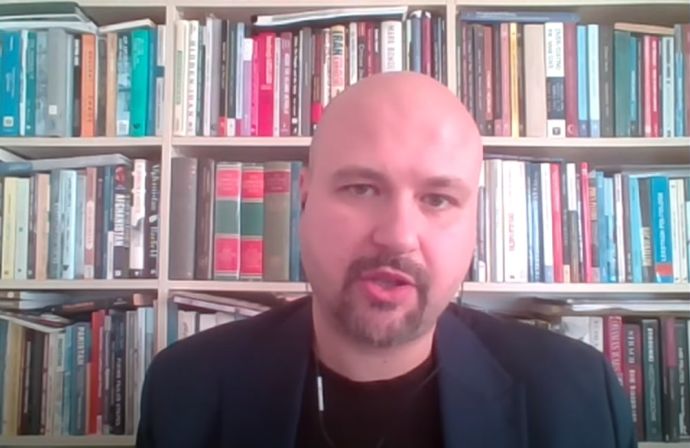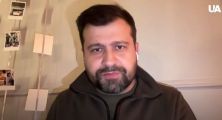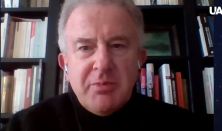The commentary discusses the likely death of Hamas leader Yahya Sinwar by Israeli forces, noting that his death will not significantly change Hamas’ operations. Hamas’ political leadership, largely based outside Gaza, ensures the group can continue despite such losses. It compares Israel’s military efforts against Hezbollah, predicting that while Israel may weaken Hezbollah, it cannot eliminate the group due to its deep roots in the Shia community of Lebanon.
The speaker contrasts Ukraine’s struggle with Russia, highlighting the lack of Western political will to confront Russia and the logistical challenges Ukraine faces. Lastly, the text explains Iran’s indirect support for proxies like Hamas and Hezbollah and its opposition to Western powers, stemming from its post-1979 revolution stance.
We welcome Marcin Krzyzanovski, Expert on the Middle East at the Warsaw Institute, answering our question tonight – interview on UATV English.
— We must wait for the official confirmation. However, we are 90% sure that Yahya Sinwar was killed by Israeli forces today, maybe one or two hours ago. His death will not affect too much the whole operation in the Gaza Strip and the policy of Hamas towards Israel. It’s not the first time a Hamas leader has been killed—his predecessor was killed, and his predecessor’s predecessor was also killed. So, we can say that being killed by Israelis is a normal fate for Hamas leaders. And I’m sure very soon they will elect a new one.
We have to remember that most of the bigger part of the political wing of Hamas is located outside of the Gaza Strip, most probably in Qatar. So, they are safe and able to continue their work against Israel. Their confrontation will most probably be limited to Israel itself, Lebanon, and maybe a small part of Syria close to the Lebanese border, but not beyond that.
The final outcome of the current battle between Hezbollah and Israeli forces is unknown. Most probably, Israel will be able to destroy most of Hezbollah’s military forces, but they will not be able to destroy the whole organization. Unfortunately for Israel, Hezbollah is very resilient, and it is part of the social fabric of the Shia community in Lebanon. It is impossible to get rid of Hezbollah solely by military means, without, of course, committing genocide or occupying the whole of Lebanon. And I don’t think Israel is politically ready for that. Even in the case of a full-scale occupation of southern Lebanon, we would most likely witness a repetition of history. Israel occupied southern Lebanon from 1982 until 2000 and then invaded Lebanon in 2006, but each time, they were unable to destroy Hezbollah.
This time, however, the war is a little different than before. The Israeli government is determined to destroy Hamas. But as I said, it seems that destroying it solely by military force is rather impossible. Unfortunately for Ukraine, there are two big differences between Ukraine’s situation and Israel’s. First of all, there is a lack of political will to directly confront Russian air forces, as shown by the Western governments.
Second, Ukraine is much, much bigger than Israel, so from a logistical and technical point of view, it is much harder to cover the whole Ukrainian territory. However, with strong political will, which is currently lacking, it would at least be possible to cover most parts of Ukraine. But as I said, the biggest problem is the lack of political will.
Unfortunately, at the moment, all options are on the table. However, the most probable scenario is the status quo. Iran will most likely not be dragged into a direct war with Israel but will continue financing, supporting, and aiding its proxies in the region, especially Hezbollah and various Shia militias in Iraq and Syria, as well as Hamas.
However, there is a chance that if Israel decides to hit Iran directly, Iran will respond, and that would lead to major escalation.
The most important thing to note is that the Shia branch of Islam is a minority—around 15% of the world’s Muslims are Shia. That’s one thing. The second thing is that the main Shia country, Iran, became an enemy of the West after the Islamic Revolution in 1979. Before that, this Shia country was a major ally of the United States. But when the government changed, the state’s attitude also changed. As Iran positions itself as the protector and champion of the Shia world, it supports mostly Shia organizations. To gain support from Iran, it’s necessary to have anti-Americanism and anti-Westernism as part of the given agenda.
Read also: Korean Question: between North and South










